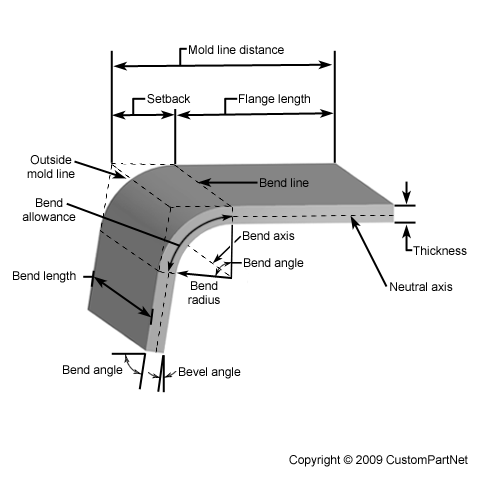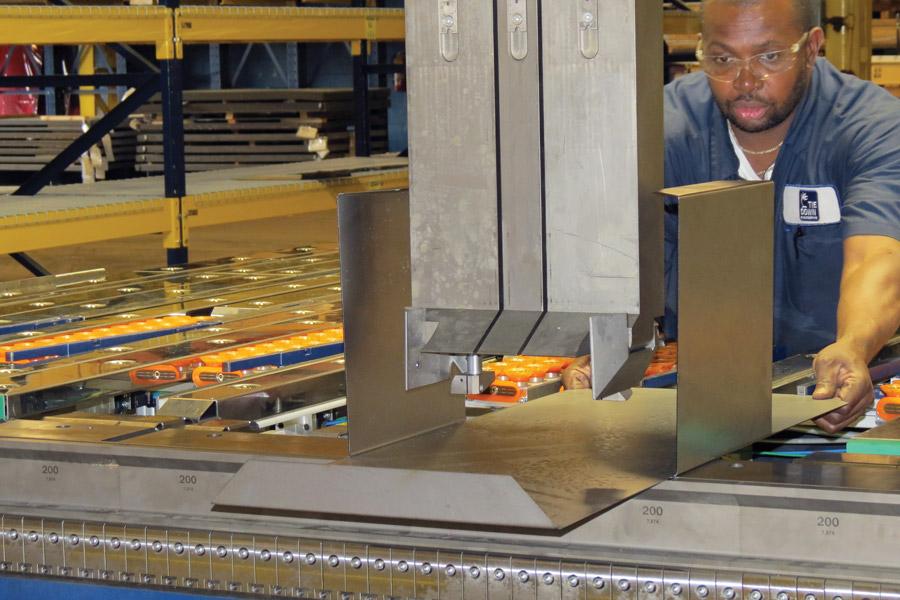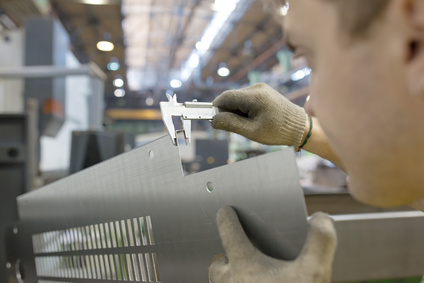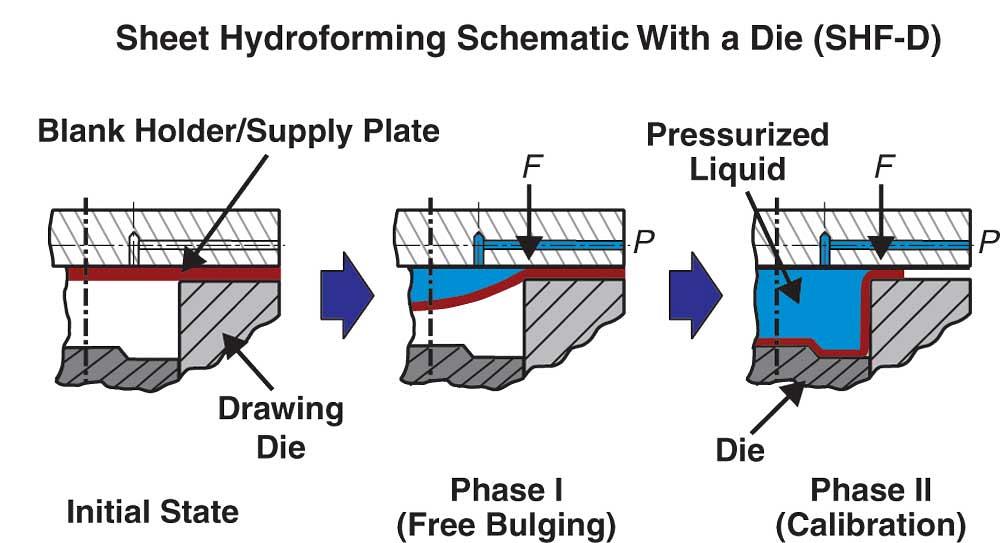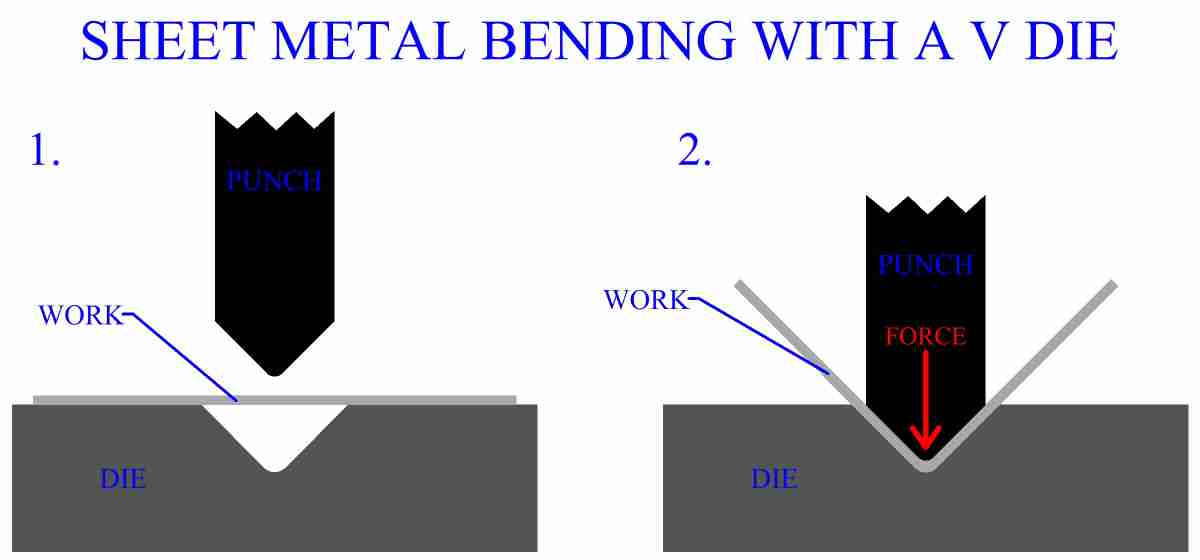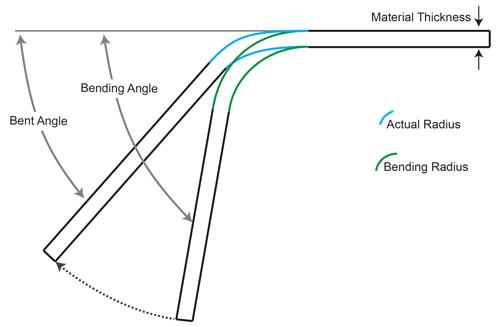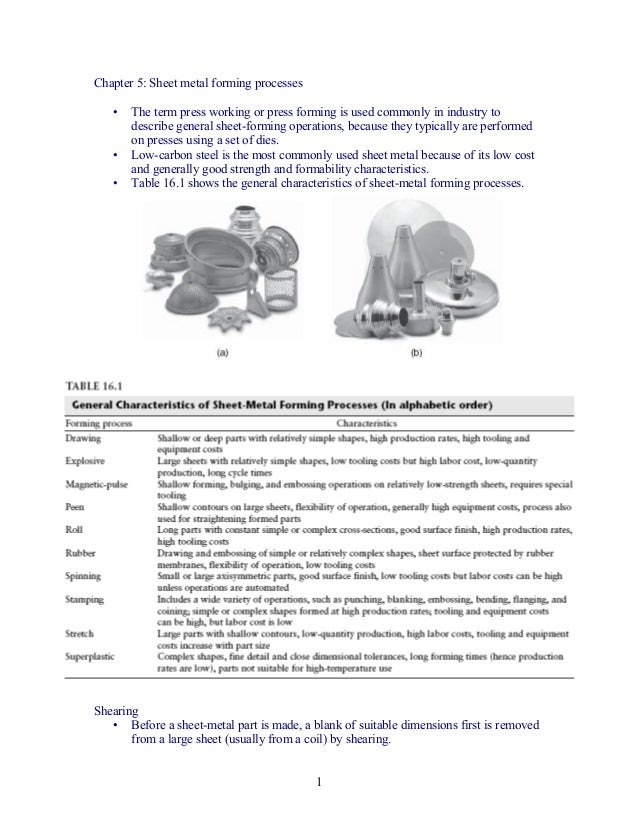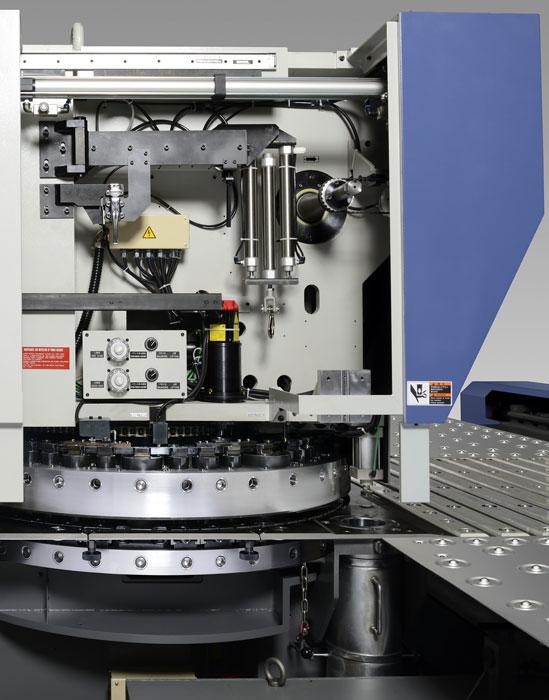B in conventional sheet metalworking operations a what is the name of the tooling and b what is the name of the machine tool used in the operations.
Conventional sheet metalworking operations.
Identify the three basic types of sheet metalworking operations.
Sheet metalworking cutting and forming thin sheets of metal usually performed as cold working sheet metal 0 4 1 64 to 6 mm 1 4in.
Mainly sheet metal process can be divided into three types.
C in blanking of a circular sheet metal part is the clearance applied to the punch diameter or the die.
The die diameter equals the blank diameter and the punch diameter is smaller by twice the clearance.
The punching process requires a punch press sheet metal stock punch and die.
The metal being formed must have the ability to stretch and compress within given limits.
For additional information visit.
In conventional sheet metalworking operations a what is the name of the tooling and b what is the name of the machine tool used in the operations.
A the tooling is called a punch and die.
The sheet metal stock is positioned between the punch and die inside the punch press.
Most part defects such as splits and wrinkles occur in forming operations.
A punch and die b stamping press.
A identify the three basic types of sheet metalworking operations.
The die located underneath the sheet has a cutout in the shape of the desired feature.
In conventional sheet metalworking operations a what is the name of the tooling and b what is the name of the machine tool used in the operations.
The standard method of press forming the part.
B the machine tool is called a stamping press.
Cutting bending and drawing.
In conventional sheet metalworking operations a what is the name of the tooling and b what is the name of the machine tool used in the operations.
A the tooling is called a punch and die.
The first one is sheet metal cutting second one is sheet metal bending or forming and the last one is known as deep drawing in this article we mainly focus on sheet metal cutting operations and other two we will discuss into upcoming articles.
Successful sheet metal forming relies heavily on the metal s mechanical properties.
Secondary finishing operations are typically performed to attain smoother edges.
All forming operations deform sheet material by exposing it to tension compression or both.
B the machine tool is called a stamping press.

